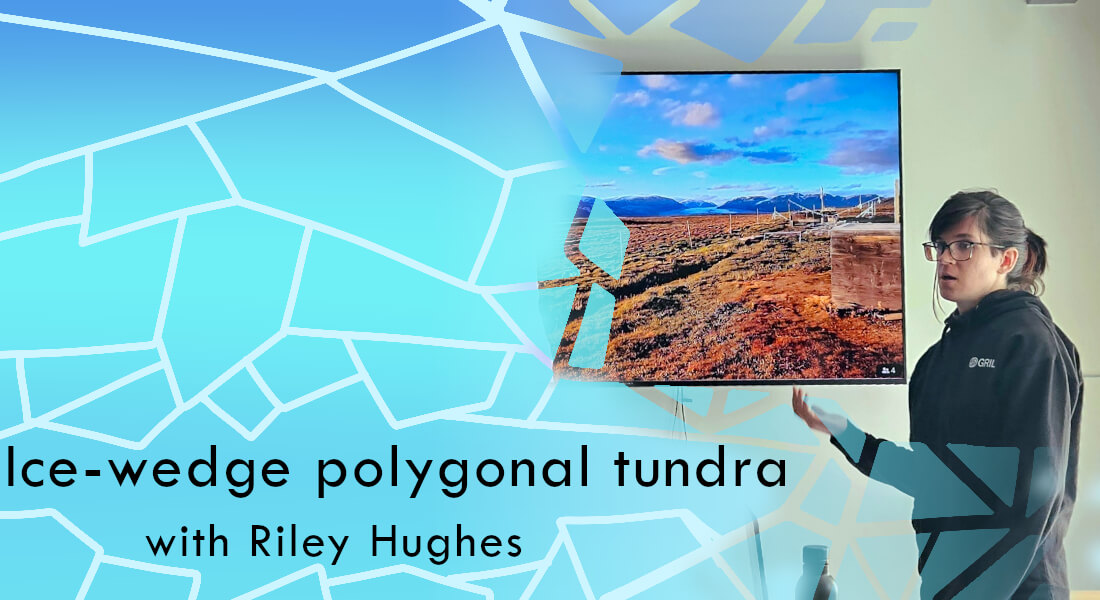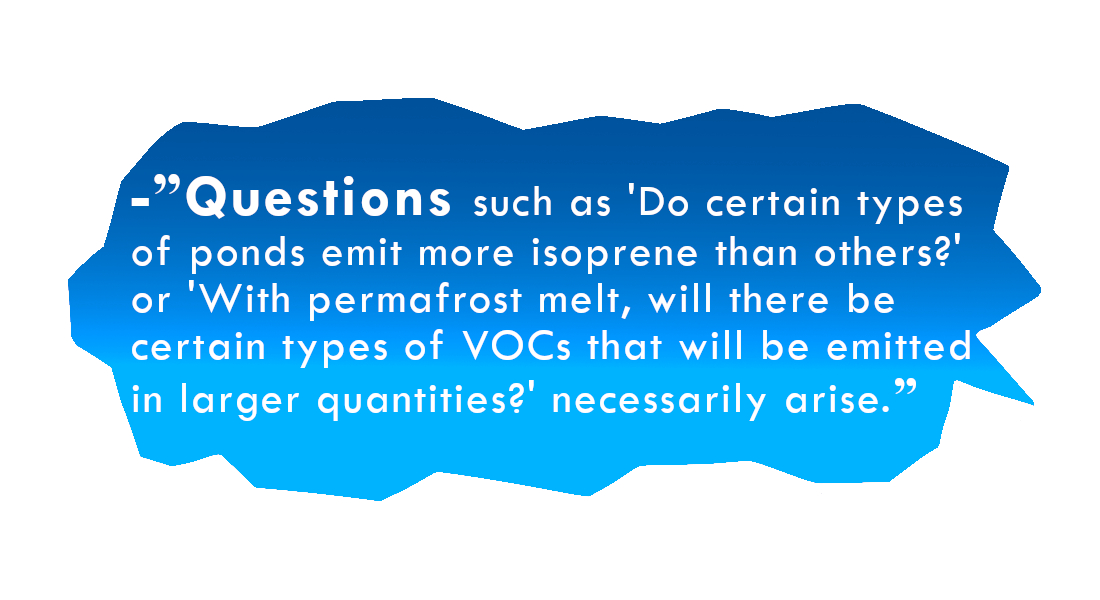
Riley Hughes is a visiting PhD student from the Institut National de la Recherche Scientifique (INRS) in Quebec, who is doing a collaboration with VOLT on VOC production and fluxes on different water bodies in Bylot, an island in Northern Canada.
Bylot is an island in the High Arctic region of Canada, around 11,000 km2 in size. The environment consists of vegetation no taller than ~40 cm, continuous permafrost, glaciers and ice-wedge polygonal tundra. Ice wedge polygonal tundra is characterized by ice wedges that form due to the volume of ice decreasing during winter, causing tensions and cracking in the ground. These cracks eventually fill with water as snow melts - because of permafrost there is little drainage of the melted snow. This cycle is repeated through hundred thousands of years, gradually forming ponds.

The ponds come in different types: eroding and stable ice wedge troughs, and polygonal ponds. The eroding ice wedge has no plants at its borders due to its ongoing erosion and growth, while the stable ice wedges no longer erode and have plants growing along its edges - it is usually much shallower than the eroded. Meanwhile, polygonal ponds have high primary production with cyanobacteria forming mats.
Few people may have heard of the ice-wedge polygonal tundra and therefore suppose that it is of little importance, however it matters much more than most people are aware of.
”VOC production and emission in the High Arctic is still very misunderstood. We barely know the VOCs that are emitted from any type of pond in the first place, and we therefore do not know how ponds influence the atmosphere. Ponds cover a much higher percentage of the landmass in the Canadian Arctic than anywhere else in the world, are much more productive than temperate lakes, and we think they must therefore have a high impact on VOC production and emission,” Riley explains.
This ecosystem is very vulnerable to climate change as the increases and drastic shifts in temperature cause deep water-filled troughs to increase, causing flooding of the Arctic tundra. Due to the environmental changes, the production and fluxes of VOCs will likely be affected and there is already very little literature on VOC production and emission from Artic ponds.

“The Arctic is also very vulnerable to big shifts and increases in temperatures and precipitation, which will change VOC production and fluxes, and their effects on the atmosphere. We do not know if ice-wedge and polygonal ponds emit certain VOCs that influence the atmosphere and climate warming, and how much. For example, isoprene allows greenhouse gases to remain in the atmosphere for longer, and DMS (NB dimethyl sulphide) has an influence of cloud formation. Questions such as 'Do certain types of ponds emit more isoprene than others?' or 'With permafrost melt, will there be certain types of VOCs that will be emitted in larger quantities?' necessarily arise,” she concludes.
Riley is interested in researching these two subjects, and she has begun trying to answer these questions by sampling dissolved VOCs in different pond variations from different depths. The goal is to be able to identify the patterns, differences and relationships between VOCs and other variables eg. the general physiochemistry of the water, greenhouse gas emission, phytoplankton taxa etc. All so we can learn more about the possible effects of climate change on this unique kind of ecosystem.
